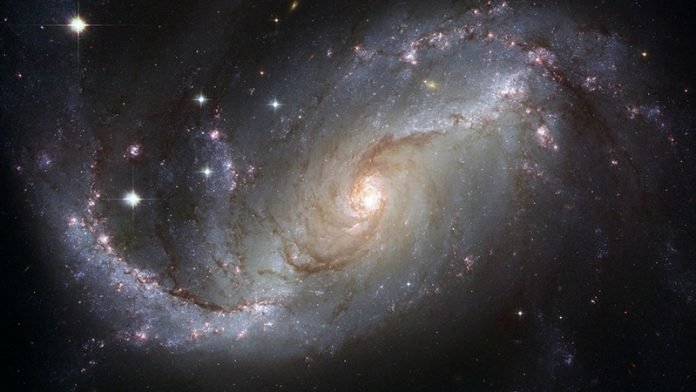
Next time there is an argument about the age of the universe, just say it is 12.6 billion years old.
University of Oregon physicist Jim Schombert has the equation to back it up.
In a study published in the Astronomical Journal, Schombert and colleagues detailed how they used empirical data, in this case observable measurements on the distance from Earth of 50 galaxies, to tweak a 90-year-old computational tool called the Hubble constant to measure the expansion of the universe.
Dating the Big Bang, which gave birth to the universe, has relied on mathematics and computational modeling, using distance estimates to the oldest stars, the behavior of galaxies and the rate of the universe’s expansion.
The idea is to compute how long it would take all objects to travel backward to the beginning.
A key calculation is the Hubble constant, named after Edwin Hubble, the namesake of the Hubble Space Telescope, who first calculated the universe’s expansion rate in 1929.
A more recent technique uses observations of leftover radiation from the Big Bang.
It maps echoes in spacetime, known as the cosmic microwave background, and reflects conditions in the early universe as set by the Hubble constant.
The science for such research, Schombert said, is ruled by mathematical patterns expressed in equations that often reach different conclusions. The universe’s age, under the differing scenarios, ranges from 12 billion to 14.5 billion years.
“The distance scale problem, as it is known, is incredibly difficult because the distances to galaxies are vast and the signposts for their distances are faint and hard to calibrate,” he said.
Schombert and colleagues used a new approach, recalibrating a distance-measuring tool known as the baryonic Tully-Fisher relation independently of the Hubble constant.
They took the distances of 50 galaxies, as determined in part with help from the Spitzer Space Telescope, and used that hard data to estimate the distances of 95 other galaxies.
This approach, Schombert said, better accounts for the mass and rotational curves of galaxies than data used to build previous equations.
Schombert’s team set the Hubble constant at 75.1 kilometers per second per megaparsec, give or take 2.3. A megaparsec, a common unit of space-related measurements, is equal to 1 million parsecs. A parsec is about 3.3 light years.
All Hubble constant values lower than 70, his team wrote, can be ruled out with 95 percent confidence.
Traditional measuring techniques over the past 50 years have set the value at 75, while the cosmic microwave approach computes a rate of 67. The techniques, Schombert said, should still arrive at the same estimate.
“The tension in the field occurs from the fact that it does not,” he said. “This difference is well outside the observational errors and produced a great deal of friction in the cosmological community.”
Calculations drawn from observations of NASA’s Wilkinson Microwave Anisotropy Probe in 2013 put the age of the universe at 13.77 billion years, which, for the moment, represents the standard model of Big Bang cosmology.
“Our resulting value is on the high side of the different schools of cosmology, signaling that our understanding of the physics of the universe is incomplete, with the hope of new physics in the future,” he said.
Co-authors on the paper were Stacy McGaugh of Case Western Reserve University in Cleveland and Federico Lelli of Cardiff University in the United Kingdom. NASA and the National Science Foundation supported the research.
Written by Jim Barlow.



